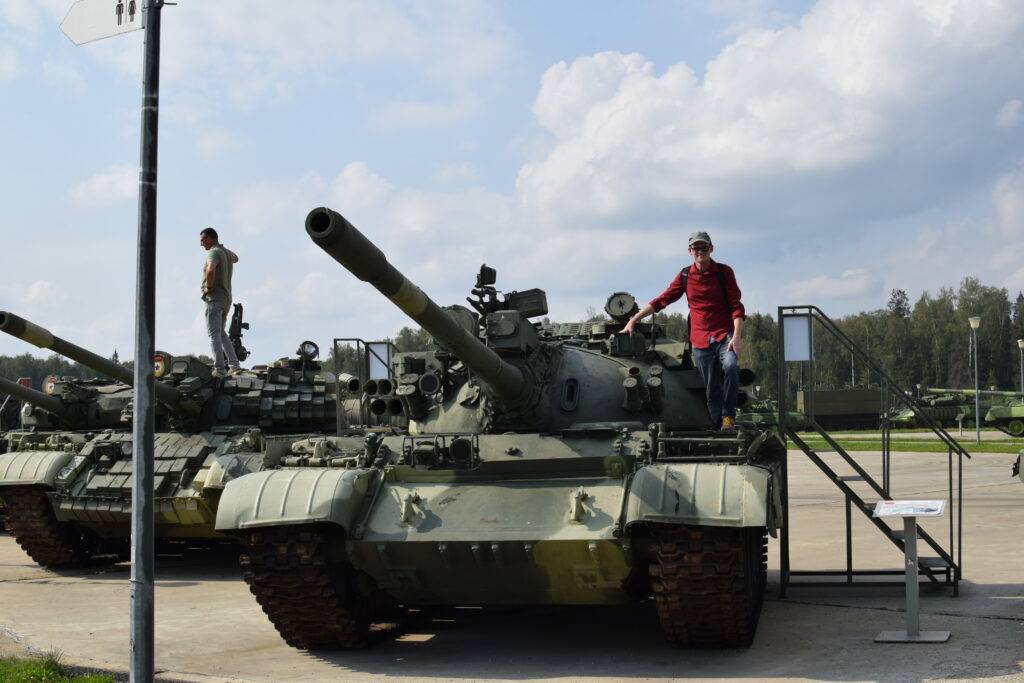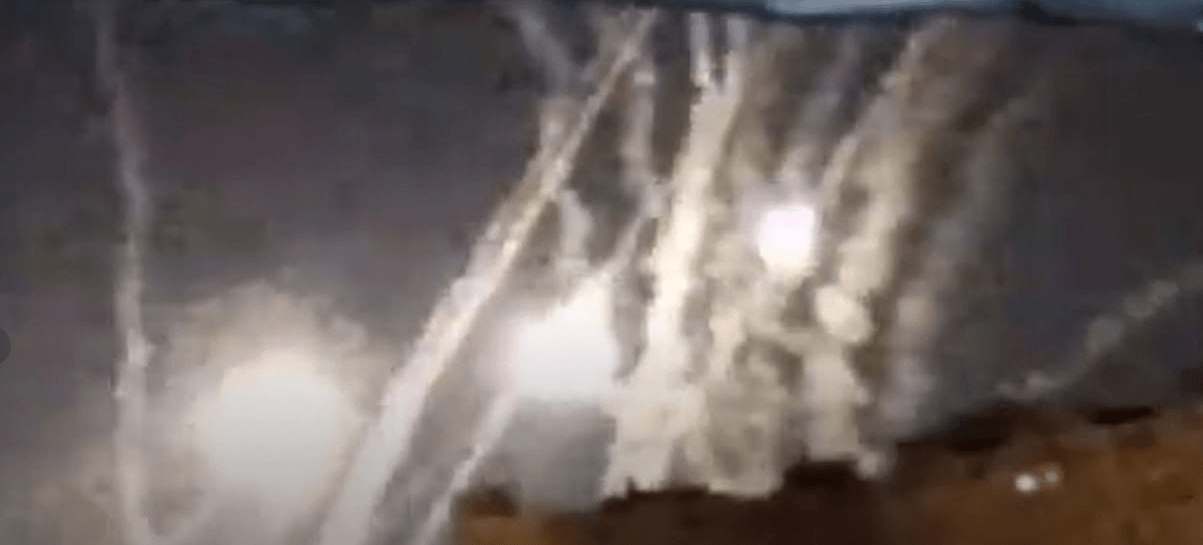Today’s shocking video of a Patriot system trying, and failing, to intercept a Russian missile and then being destroyed by it prompted me to do some personal research, and it’s not good.
Synopsis: early this morning on 16 May, a Patriot battery in Kiev (there are two such systems in Ukraine, one American and one European, it’s not clear which this was) was captured on multiple video feeds a slew of interceptors against an incoming Russian Kinzhal missile, and was then, apparently, destroyed. Or, per official American statements, may have been damaged. You can watch the video on my channel below:
Carl Hamilton wrote an excellent piece about the incident on Quora:
To me it appears that: 32 Patriot missiles were fired by the patriot battery, of these 2 was a catastrophic misfires that fell down almost immediately after launch, probably landing inside Kyiv, several others appears to be guidance failures that went off in random directions, and 1 failed to fire at all. It appears like the full load of 2 launch units with PAC-3 missiles…
Point defense, is the mode in which an anti air system defends it’s own location, it is the optimal mode of engagement for an anti aircraft missile. If 32 attempts in the optimal mode for an anti aircraft missile fails, it should tell you that in area defense mode (defending targets in an area away from the launcher against targets not coming at the launcher) the system will perform far worse.
Apparently, the Patriot’s inadequacies are not new. Here’s a 2018 article in Foreign Policy pointing out the system’s disappointing performance in Saudi Arabia, where it has consistently failed to intercept incoming Yemeni missiles:
On March 25, Houthi forces in Yemen fired seven missiles at Riyadh. Saudi Arabia confirmed the launches and asserted that it successfully intercepted all seven.
This wasn’t true. It’s not just that falling debris in Riyadh killed at least one person and sent two more to the hospital. There’s no evidence that Saudi Arabia intercepted any missiles at all [emphasis mine]. And that raises uncomfortable questions not just about the Saudis, but about the United States, which seems to have sold them — and its own public — a lemon of a missile defense system.
Social media images do appear to show that Saudi Patriot batteries firing interceptors. But what these videos show are not successes. One interceptor explodes catastrophically just after launch, while another makes a U-turn in midair and then comes screaming back at Riyadh, where it explodes on the ground.
Here’s a video on Twitter showing the catastrophic failures the Foreign Policy article referred to. One interceptor actually “circles back” Jen Psaki style before plummeting into the ground.
What’s particularly interesting about this video is that the failures in the 2018 incident in Saudi Arabia are near-identical to what’s observed multiple times in the Ukrainian launch video. Some interceptors inexplicably fly off course in random directions, or lose power and drop to the ground.
This thread of failure goes back to Desert Storm in 1991, when Prof. Theodore A. Postol testified before Congress that the Army’s claim of an >80% success rate against Scud missiles was mathematically impossible. Furthermore, based on available video evidence, the real success raid could have been less than 10%, perhaps even 0%. According to Postol:
The Patriot can be thought of as a platform which carries a shotgun that sprays pellets at the target it is to destroy. Since the Patriot warhead fires roughly 1000 pellets in the forward direction and in a roughly hemispherical pattern, if the Patriot fires its pellets at a range much greater than 5 to 10 meters from its target, it will be increasingly unlikely that even one pellet will hit the target. Thus, a 30 meter miss distance is nine times less likely to damage the target than a 10 meter miss and a 100 meter miss is 100 times less likely to damage the target (see figure 1).
This means if miss distances much larger than 100 meters are observed, the result will be a near zero probability that even one pellet from the interceptor will have hit the target. In addition, since the Patriot fires its pellets into the forward direction, if it flies by the target warhead and detonates, the pellets will be travelling away from the target rather than toward it (see figure 2)…


- There are roughly 25 clear observations of Patriot interceptors missing Scud targets as the Patriots detonate in the sky over Saudi Arabia.
- The miss distances observed in all but 2 to 4 intercept attempts are hundreds of meters or more. In these intercept attempts, it was difficult to estimate miss distances because of the viewing angle of the camera. For example, in one case, the Scud was moving in a direction roughly towards the camera and a Patriot detonated behind the Scud in its wake. In this case, estimates of miss distances are even more uncertain.
- There is one clear example of a successful intercept of a target over Riyadh, but it is not clear whether the target was a Scud warhead or a large piece of tankage.
- There is clear evidence that interceptors dove into the ground in Saudi Arabia. There is also evidence in one, and possibly two, video records taken in Saudi Arabia that interceptors also suffered rocket motor failures and then fell to the ground.
- There is evidence of a timing or acquisition problem between the Patriot fire units and interceptors. This is indicated by the occasional detonation of interceptors at very low altitude very shortly after launch (about 3.5 and 4 seconds after launch, having travelled distances of only .7 to .9 kilometers). It is possible that these interceptors self destructed early in flight because they failed to receive guidance information through radio links from the Patriot radar or otherwise malfunctioned.
- A significant number of Patriot misses appear to have been due to late launch of interceptors or nonoptimal choices of intercept points. As a result, these Patriots flew trajectories that later placed them so far from target Scuds that it was not possible to achieve intercept points near target Scud warheads. When this occurred, the Patriots detonated at ranges of hundreds or thousands of meters from target Scuds.
- The breakup of Scuds can clearly be observed in many of the video records. When the Scud breaks up a luminous thick track of debris can be clearly seen led by a bright spot, which is the warhead. The video data shows that Patriots sometimes engaged Scud missiles prior to their breakup. However, in the cases where there are clear video records, the Patriots failed to intercept Scud missiles or warheads…
The real issue here is not whether Patriot was a technical success or failure in the Gulf War. Patriot was a success in terms of its tremendous positive psychological and political impact for the coalition. The Scuds were, in fact, not easy targets nor was the Patriot an optimal missile defense system. Prior to the war, I might have considered a 10 percent success rate as a pretty good performance by Patriot.
The real issues are whether the performance of Patriot has been misrepresented, how such a misrepresentation could have occurred, and the effects of such misrepresentations on the crucial national debate on the future role of missile defenses in U.S. defense policy. I call on the Army and Raytheon to enter this debate in a serious way. They should produce the evidence, from publicly available videotapes, that roughly one out of two Patriots could arguably have hit Scud targets over Saudi Arabia.
The “real issue,” per Postol, is that the Patriot was a (very expensive) psychological morale booster, but not much else. Even more astonishing, the catastrophic deficiencies in the Patriot cited by Postol are all, more than 30 years later, still happening.
One last question, how many NATO soldiers were killed in this missile strike? Because surely, no serious person actually believes that Biden gave Ukrainians full control of NATO’s most revered air defense weapon with only 10 weeks of training and no adult supervision in the room, right?
Ian Kummer

All text in Reading Junkie posts are free to share or republish without permission, and I highly encourage my fellow bloggers to do so. Please be courteous and link back to the original.
I now have a new YouTube channel that I will use to upload videos from my travels around Russia. Expect new content there soon. Please give me a follow here.
Also feel free to connect with me on Quora (I sometimes share unique articles there).



The Patriot sure appears to be a lemon and an expensive one at that. It’s more proof US arms manufacturers design weapons to line pockets instead for winning.
I don’t believe FJB wanted a S-400 system to give to the Ukro-Nazis. I believe he wanted it delivered to the good old USA for reverse engineering.
Back in the mid 2000s the then Indian regime of Manmohan Singh was falling over backwards to appease the George W Shrub dispensation. One of the things Shrub was pressing India to do was purchase the Patriot for the air force. To this end Indian newspapers like the Times Of India and the Telegraph (of Calcutta, not the London one) were paid by the American embassy to run propaganda articles extolling the virtues of this missile. I recall one particular article from 2004 which averred:
I immediately wrote an email to the editor pointing out that Iraq had no SCUDs in 2003, that if they’d had any, it would have justified the invasion, and asking whether the author of the article had bothered to do the ten seconds of research necessary to establish this fact.
They never published the letter, of course.